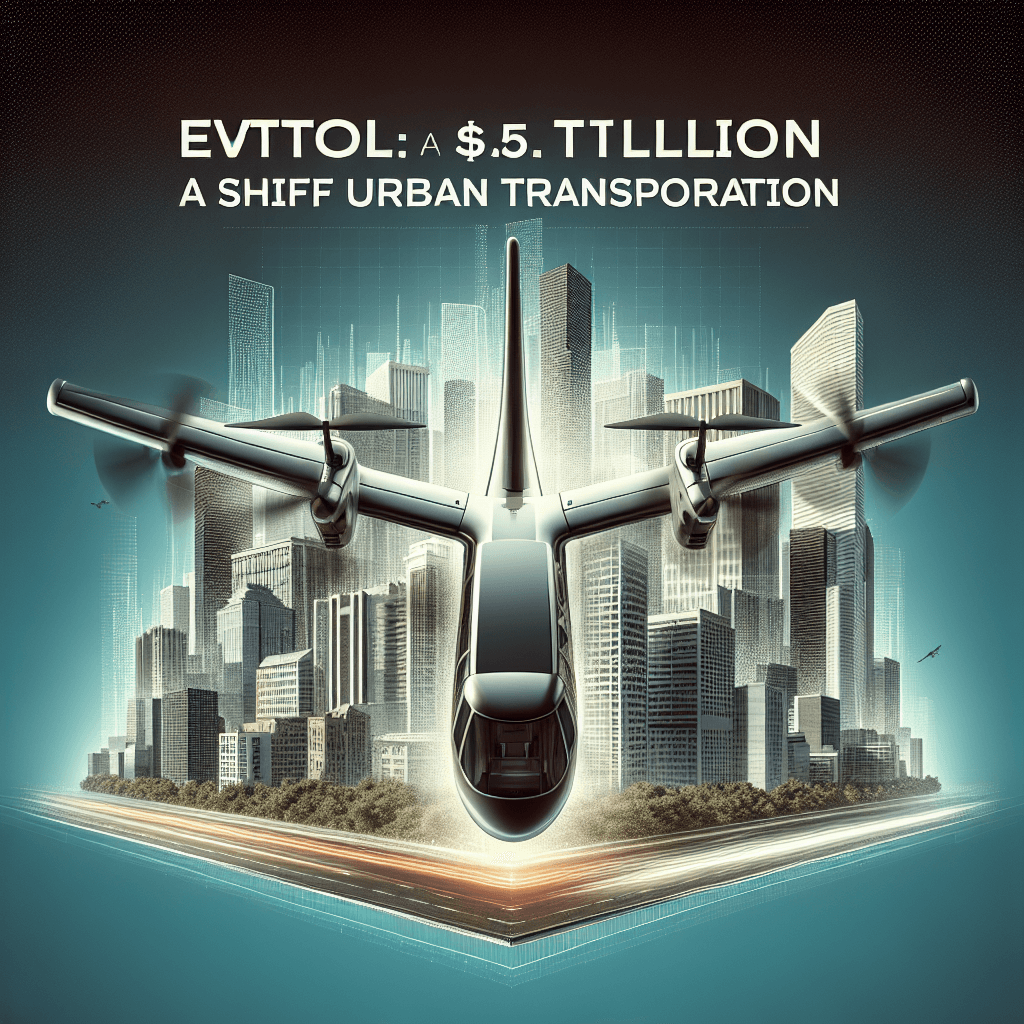eVTOL Aircraft: A $1.5 Trillion Shift in Urban Transportation

Urban Congestion: A $200 Billion Annual Cost
Traffic snarls have become a defining feature of modern city life. The average American driver spends 43 hours per year in gridlock, the equivalent of a full workweek. In megacities such as Miami (74 hours), Los Angeles (88 hours) and New York (102 hours), commuters lose up to four full workweeks annually. The economic impact—estimated at over $200 billion in wasted fuel, time and productivity—has governments, investors and innovators racing for solutions.
“Roads? Where we’re going, we don’t need roads.” — Doc Brown, Back to the Future
Advanced Air Mobility: From Concept to Certification
Vertical takeoff and landing (eVTOL) vehicles sit at the heart of the Federal Aviation Administration’s (FAA) Advanced Air Mobility (AAM) initiative. These electric aircraft promise the hover capability of helicopters with the efficiency of fixed-wing planes, enabling short-hop flights over urban cores.
FAA’s Regulatory Roadmap
- September 2022: First federal vertiport design standards for landing pads at airports, stadiums and rooftops.
- May 2023: Urban flight corridor and communication protocols published.
- October 2024: Performance-based certification rules, pilot licensing and National Airspace System (NAS) integration guidelines.
These milestones set the stage for scalable commercial operations by 2028, matching the FAA’s stated objectives.
Inflection Point: Market Projections and Investment Trends
After a $7 billion funding peak in 2021, eVTOL startups faced a funding downturn in 2022, raising just $3 billion according to McKinsey. The shake-out weeded out weaker players, leaving those with realistic certification timelines and robust test programs.
Market Forecasts
- McKinsey (2030): eVTOL fleets executing more daily flights than the combined schedules of the world’s top 10 airlines.
- Morgan Stanley (2040): A global $1.5 trillion revenue opportunity.
- Deloitte (2035): An industry generating $115 billion in annual revenue.
United Airlines Ventures president Michael Leskinen forecasts disruption of the $49 billion helicopter market, citing lower maintenance costs and reduced mechanical failure points in electric propulsion systems.
Technical Specifications of Leading eVTOL Models
Aircraft in development exhibit diverse architectures—multirotor, lift+cruise and vectored-thrust designs. Key performance parameters include range, payload, cruise speed and noise footprint.
Battery and Propulsion Technology
- Cell energy density: ~300 Wh/kg (advanced lithium-ion chemistries).
- Total battery capacity: 300–500 kWh, supporting 60–100 mile missions.
- Redundant electric motors: 8–12 units, each rated 50–100 kW for VTOL lift.
Flight Performance
- Cruise speed: 120–200 mph.
- Maximum payload: 600–900 kg (pilot plus 4–6 passengers).
- Noise levels: Targeting ≤65 dB at 250 ft, compliant with urban sound ordinances.
Challenges and Infrastructure Requirements
Despite technological advances, scaling AAM faces hurdles in vertiport deployment, air traffic management and public acceptance.
Vertiport Network Build-Out
- Site selection: Rooftops, parking garages and underused heliports.
- Charging infrastructure: High-power DC fast chargers delivering 1 MW+ per pad.
- Regulatory permitting: Local zoning, noise mitigation and safety buffers.
Urban Air Traffic Management (UATM)
NASA and industry partners are developing digital UATM platforms integrating GPS, detect-and-avoid sensors and secure 5G/4G communications. Corridor-based routes will streamline pilot workloads and minimize conflicts with existing air traffic.
Archer Aviation’s Olympic Selection: A Milestone
On Thursday, Archer Aviation Inc. (NYSE: ACHR) was named the official air taxi provider for the 2028 Los Angeles Olympic and Paralympic Games. Archer’s Midnight eVTOL, with a 60-mile range and cruise speed of 150 mph, will ferry VIPs, athletes and emergency responders between venues.
Midnight Aircraft Specifications
- Dimensions: 36 ft wingspan, 16 ft length.
- Propulsion: 12 electric motors, 420 kWh battery pack.
- Certification target: FAA Part 23 with multi-modular safety architecture.
Market Impact and Stock Performance
Since the announcement, ACHR shares surged 54% in one day and are up 83% over seven weeks. Archer aims for FAA commercial certification in 2025 and operations at scale by 2028.
Investment Landscape and M&A Trends
Strategic investors including United Airlines Ventures, Toyota and Hyundai have injected capital into leading eVTOL firms. M&A activity is accelerating as legacy OEMs acquire startups to secure intellectual property and accelerate certification efforts.
Looking Ahead: Commercialization and Adoption
With regulatory frameworks nearly finalized and infrastructure pilots underway in Dallas, Miami and Singapore, the first commercial air taxi services could launch as early as 2026 in demonstration corridors, scaling to dozens of cities by 2030.
Conclusion
The convergence of battery innovation, digital airspace management and supportive regulation has propelled eVTOL from concept to reality. As cities struggle with ground congestion and carbon mandates, Advanced Air Mobility stands poised to unlock a $1.5 trillion urban transportation market—and finally make those flying car dreams take flight.